A full-length album commonly features 8 to 15 tracks, though this isn’t the only rule. The precise count, however, varies significantly by genre, an artist’s creative vision, and even evolving consumption habits like streaming.
Crucially, industry recommendations often suggest keeping total album playtime under 80 minutes.
This guideline, rooted in traditional formats and listener attention spans, ensures a cohesive experience, balancing artistic ambition with audience accessibility for optimal engagement.
How Many Tracks Should An Album Have?
The standard number of songs on an album usually falls between 8 and 15 tracks. This range has become a common industry norm, offering enough variety without overwhelming the listener.
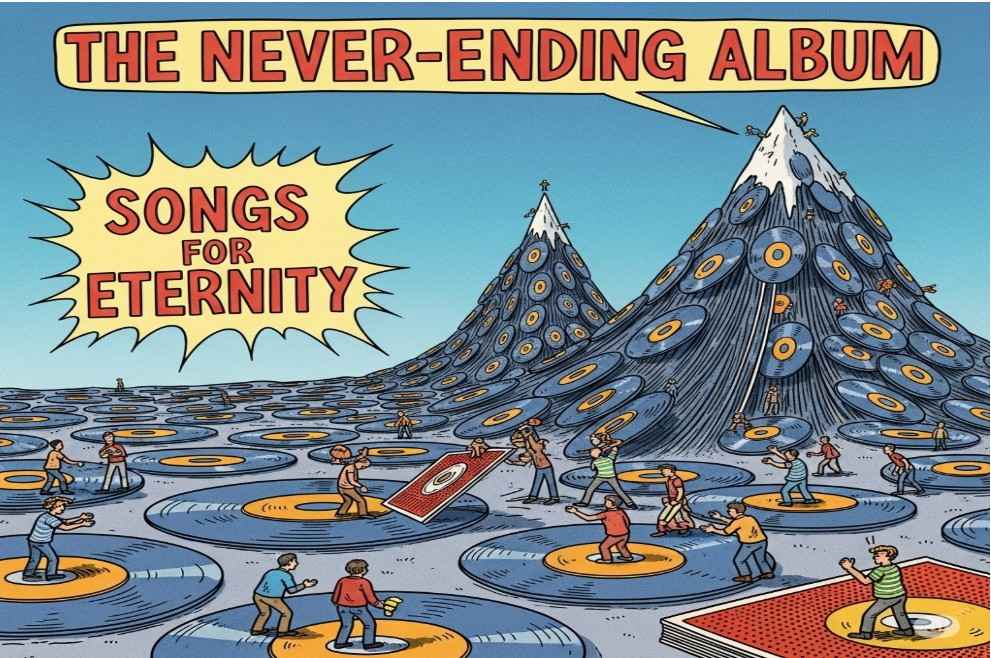
It allows artists to explore different sounds and themes while maintaining a cohesive narrative or vibe. Of course, some albums go shorter or longer, but if you’re aiming for a full-length release, 8-15 songs is generally the sweet spot.
Typical Track Counts By Album Type
Albums come in all shapes and sizes, and the number of tracks often depends on the type of album being released. From full-length projects to quick teaser EPs, each format follows its rough structure when it comes to track count and duration.
| Album Type | Typical Track Count | Typical Duration | Examples |
|---|---|---|---|
| Full-Length Album (LP) | 10 to 15 tracks | 30 to 60+ minutes | Taylor Swift’s Folklore (16), Kendrick Lamar’s DAMN. (14), Adele’s 25 (11) |
| Extended Play (EP) | 4 to 7 tracks | 10 to 25 minutes | Billie Eilish’s Don’t Smile at Me (9), The Weeknd’s My Dear Melancholy (6), Ariana Grande’s Thank U, Next (12) |
| Double Album | 20 or more tracks | Split across two discs/volumes | Prince’s Sign o’ the Times (18+), The Minutemen’s Double Nickels on the Dime (45) |
Album types are defined by their distinct track counts and durations. LPs offer comprehensive experiences, EPs provide concise releases, and double albums cater to expansive artistic visions.
1. Full-Length Albums (LPs)
A standard full-length album – also known as an LP (Long Play) and it typically includes 10 to 15 tracks and runs anywhere between 30 to 60+ minutes.
This is the most common type of album you’ll find in the music industry, designed to give listeners a rich, immersive experience. Artists use LPs to explore various themes, showcase their musical range, and deliver a complete body of work.
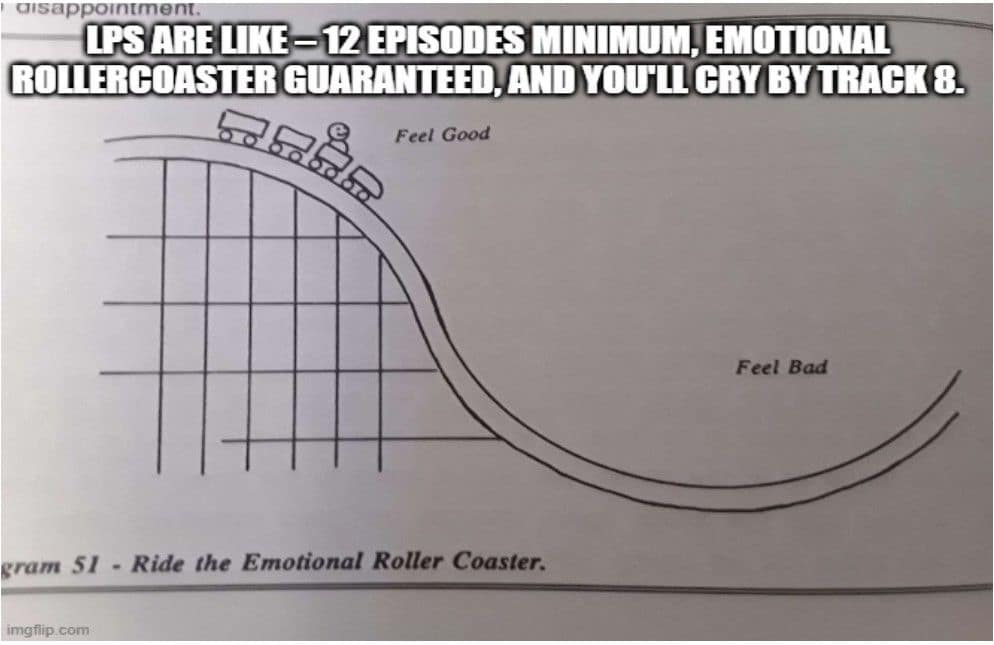
You’ll see this format used by just about every primary name in music. For instance, Taylor Swift’s Folklore contains 16 tracks, Kendrick Lamar’s DAMN. has 14, and Adele’s 25 features 11, all comfortably within the full-length album range.
Also, understand the difference between albums and mixtapes, which will help you clarify why artists choose the LP format for their most polished and comprehensive musical statements. While streaming has shifted listening habits, the LP remains the gold standard for most album releases.
2. Extended Plays (EPs)
An EP (Extended Play) is like a musical appetizer – shorter than a full album but longer than a single. Most EPs feature 4 to 7 tracks, usually clocking in at 10 to 25 minutes in total runtime.
Because they’re less of a commitment, EPs are often the go-to for emerging artists who want to introduce their sound or for established artists experimenting with new styles or concepts.

Think of EPs as a creative playground: they’re flexible, fast to release, and great for building momentum. Many artists drop EPs to test the waters with new material or to stay connected with fans between major albums.
The format works particularly well across different music genres, allowing artists to experiment without committing to a full-length project.
3. Double Albums
When a regular album just isn’t enough, artists go big – literally. Double albums usually contain 20 or more tracks and are split into two discs or digital volumes.
This format is often reserved for concept albums, career-defining statements, or deluxe editions packed with bonus material.
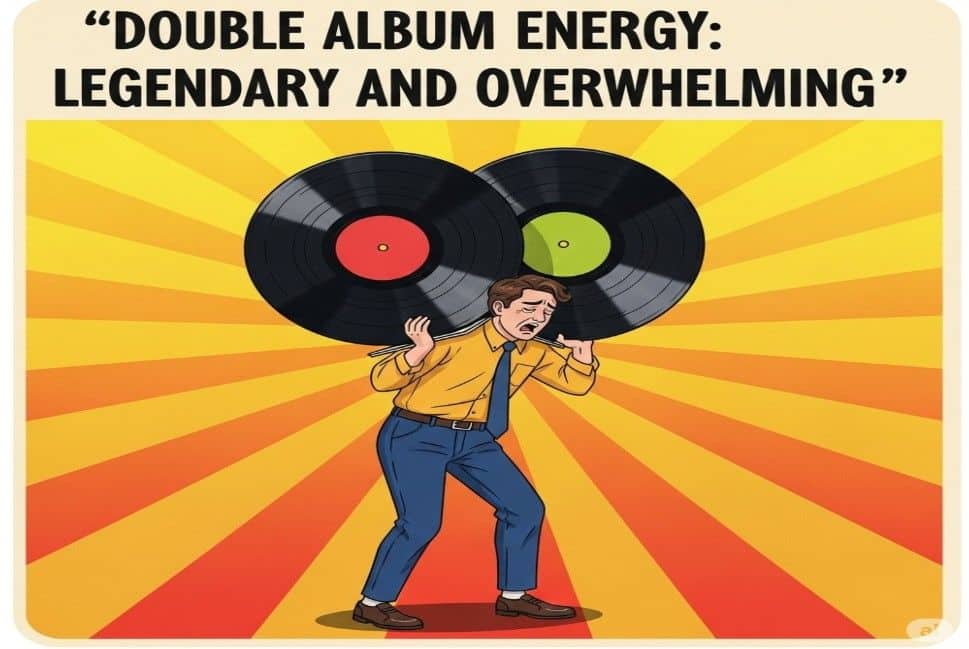
These ambitious releases let artists explore broader narratives or musical themes across a larger canvas.
Some iconic examples include Prince’s Sign o’ the Times (a double album with over 18 tracks) and The Minutemen’s Double Nickels on the Dime, which features a whopping 45 songs. While not as common today, double albums still make waves when artists want to go all out.
Why Do Some Albums Have Fewer Or More Tracks?
Ever noticed how some albums fly by in under 30 minutes while others feel like a whole weekend? That’s no accident. The number of tracks on an album can vary wildly, and it’s not just a random decision. Several key factors influence how many songs make the final cut:
1. Genre Matters (A Lot) In An Album
Different genres come with different expectations. Hip-hop albums often have more tracks – sometimes 18 or more – especially when artists want to include multiple features, skits, or diverse beats.
In contrast, indie or alternative artists tend to favor more concise albums, focusing on cohesion and mood over quantity. Pop albums usually fall in the middle, aiming for a balance between radio hits and a smooth flow.
2. Artist Preference And Creative Vision For An Album
Some artists just have a lot to say. Others prefer a “less is more” approach. For instance, artists like Kanye West have been known to release tight, 7-track albums (like Ye), while someone like Chris Brown might drop a 30+ track album just because he can.
It often boils down to how the artist envisions the project and what kind of listening experience they want to offer.
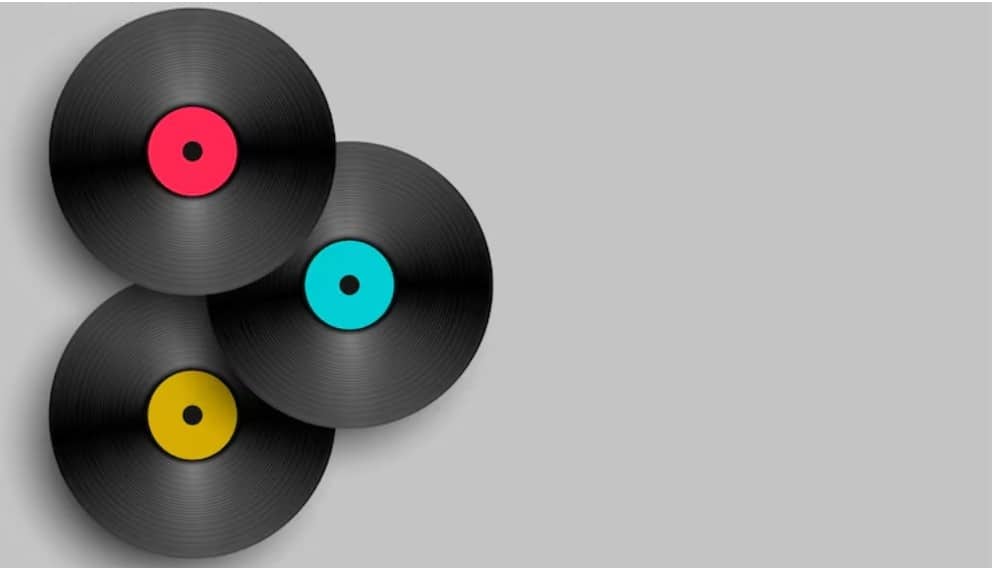
Interesting Read: You can also view the most viewed videos on YouTube, which you might love to watch and listen to, from Luis Fonsi Ft. Daddy Yankee to OneRepublic.
3. The Streaming Era Changed The Game For An Album
Thanks to platforms like Spotify and Apple Music, more tracks can mean more streams, which means more revenue. Some artists release albums with longer tracklists strategically to increase play counts.
Think of it as giving listeners more chances to hit that repeat button. It’s a smart business move, though it sometimes leads to bloated albums that could’ve been trimmed. Major music record labels often encourage this strategy to maximize streaming revenue and chart performance.
4. Concept And Storytelling Play A Big Role In An Album
Albums built around a story or theme often require a particular number of songs to tell that narrative effectively. A concept album might need nine tracks to deliver its arc, or 22.

It depends entirely on the story the artist is telling. Albums like Pink Floyd’s The Wall or J. Cole’s 4 Your Eyez Only are great examples of this, where every track serves a deliberate purpose.
Notable Albums With Unusually High Or Low Track Counts
Some albums break the rules when it comes to track numbers – either keeping things super tight or going completely overboard. Here are a few famous examples that stood out:
1. Kanye West – Ye (2018): 7 Track
A super concise album with just seven songs and a runtime of 23 minutes. Part of Kanye’s 2018 “Wyoming Sessions,” it was intentionally minimal, proving that less can still be powerful.

2. Chris Brown – Heartbreak on a Full Moon (2017): 45 Tracks
This record-breaking album features 45 tracks and runs over two hours. Chris Brown packed it with content, blending romance, heartbreak, and party vibes – likely also capitalizing on streaming revenue.

3. Taylor Swift – Midnights (3am Edition) (2022): 20 Tracks
Taylor released the standard 13-track Midnights, then shocked fans by dropping seven bonus tracks just hours later. The 3 am Edition gave Swifties a bigger look into her introspective pop world.
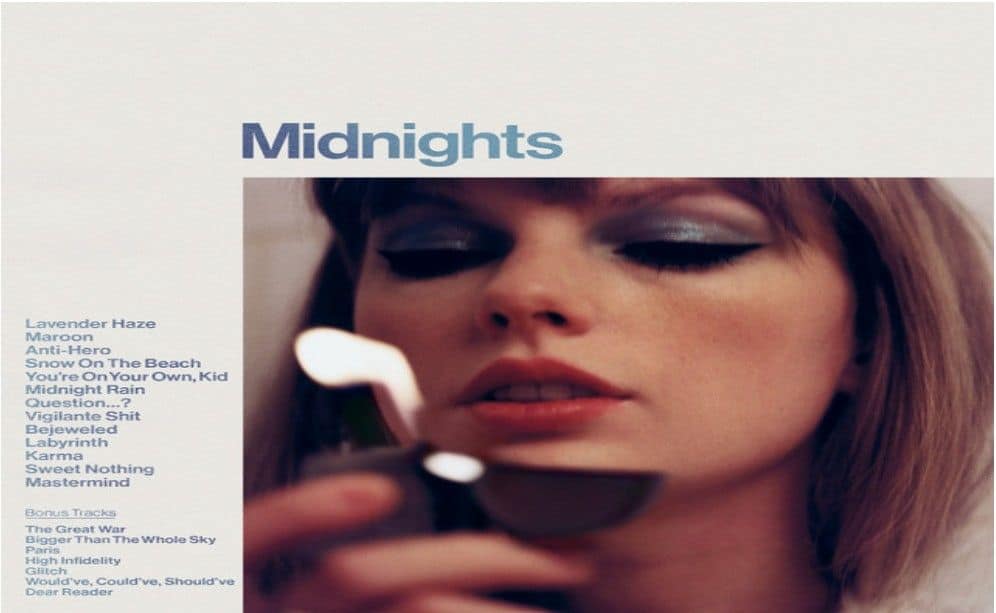
Many tracks from this album feature in Swift’s most popular songs, including Midnight, Lover, You Belong With Me, and many more.
4. Nas – King’s Disease (2020): 13 Tracks
At a neat 13 songs, this Grammy-winning album showed that even in the streaming age, traditional album lengths still thrive, especially when packed with quality and tight storytelling.
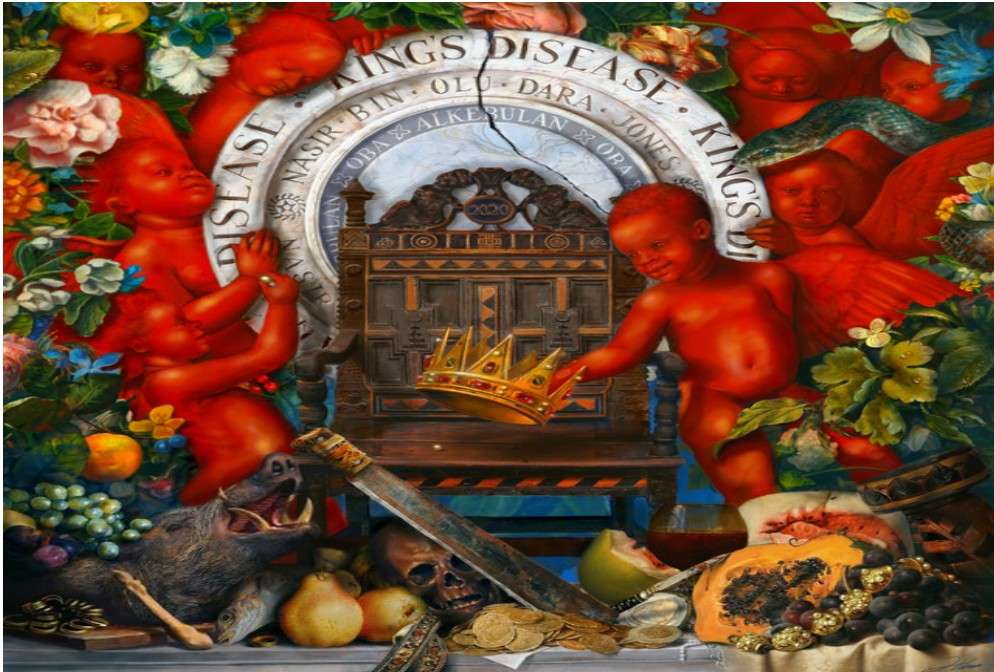
5. Drake – Scorpion (2018): 25 Tracks
Drake went big with Scorpion, a 25-track double album split between rap and R&B. It showcased his versatility, but also raised questions about length vs. depth in streaming-heavy releases.

Conclusion: Most Albums Have 8 to 15 Tracks!
There is no single, fixed answer; it’s a dynamic range based on album type, shaped by genre, the artist’s vision, and evolving listening habits.
LPs typically feature 10-15 tracks for comprehensive experiences, EPs offer concise 4-7 song listens, and double albums span 20+ tracks for expansive visions.
This variation, guided by an 80-minute runtime recommendation, highlights crucial artistic and industry choices. Let this guide help you enjoy and understand your favorite albums even more.
FAQs
An album is a full-length project, usually with 8-15 tracks, while an EP (Extended Play) is shorter, typically featuring 4-7 songs and a shorter total runtime.
Technically, yes – but it’s more commonly classified as an EP. Some artists release short albums with fewer tracks, but industry standards usually require more for a full-length album.
Most albums run between 30 and 60 minutes, depending on the number and length of tracks. Longer runtimes are common in deluxe or concept albums.
If the album is released as a deluxe edition, the bonus tracks are included in the total track count of that version, though not in the standard edition.
While more tracks offer variety, quality matters more than quantity. Some short albums are critically acclaimed, while longer ones can feel inconsistent or overloaded.

